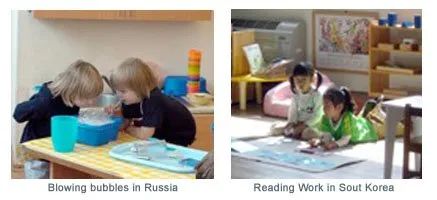Montessori and Freedom of Choice
One of the key features of Montessori homes and classrooms is that children have choices. Most of us try to structure choices into the lives of our children. Even toddlers can play with this toy or that toy. They can wear their green pants or their blue pants. They can eat an apple or an orange for snack. They can decide to sit on mama’s lap or daddy’s knee. Life is full of choices. Why it choice important in schooling?
Each one of us has our unique gifts and talents. One of us may be a fast reader, another a math whiz, yet another has a talents for all things mechanical. One may be a swift runner while another is a great cook. We are not all the same. Nor are all our children the same.
You can take ten children of exactly the same age. The may be different heights, different weights. Their skills and capabilities may be vastly different. Some are early bloomers, some are late bloomers. Some learn through visual input through what they see, some learn best by listening with their ears and some need to touch to learn. They all learn but they may have vastly different tastes in what interests them and when they are ready.
If these very different children go to the same traditional school and they have a teacher who lovingly offers them what the curriculum offers for that day, some are interested and ready for the new information and challenges, but some are not. The new tasks are just perfect for some, way too difficult for others and far too easy for others. It may be that some of the children are just smarter than others. But it may also mean that some are developmentally not quite ready for the tasks but in six months they would be perfect. Others would be a lot happier in the next grade up.
Maria Montessori understood all these learning differences and created an environment for children where they come in each day and choose what they want to work on. At the beginning of their first year in Montessori they might choose between doing a puzzle, stringing beads or looking at a book. Each day the teacher shows them new lessons and soon they have a larger choice. Eventually the choices include writing and reading, addition, subtraction, multiplication and division with concrete materials. It includes biology and geometry, art and music.

The free will of each child is gradually being educated. Each choice they have is constructive, developmentally appropriate and interesting. Montessori’s biographer E.M. Standing suggests that freedom to choose is not freedom to do anything you want, but freedom to do the right thing. For a child the right thing is what he needs to fulfill the nest step of his development at any given stage.
When a child chooses his work instead of doing what he is told to do, he often develops a more genuine interest and learns to follow the direction of what we call the “Inner Teacher.” See the archived webinar on “Helping Your Child Connect to the Inner Teacher” for more on this subject. The child begins to value the inner satisfaction he gets from doing the work that corresponds to his inner developmental needs and he is calm and joyful in his learning.
Not every child chooses to do every lesson. But that is OK. Each child chooses what he needs. There are multiple ways to teach essential skills, so a child who does not want to do one lesson, may choose another that gets him to the same goal. But in Montessori, we realize that not every child reaches those goals in the same way or at the same time.
Montessori gave a series of lectures about freedom of choice. She makes a powerful argument that the roots of tyranny are in adults forcing children to obey their commands. When a child spends his entire day, year after year, following the instruction of adults and has no right to follow his own interests, he may come to believe that his own interests are unimportant. He may come to believe that his thoughts are not as important as the thoughts of the adults who are teaching him. Learn more about balancing freedom and discipline.
Montessori believed in discipline. But she realized that the way to reach it was by creating environments where children found engaging materials to use. When they are fully engaged in the work that appeals to them at their particular level of development, they become self-disciplined. You see in Montessori classrooms a group of three-, four- and five-year-olds hard at work. No teacher could command such discipline, yet the children freely give it to their own self-chosen work.
Freedom of choice becomes a habit of mind. Freedom to explore your own thoughts and interests can open the floodgates to creativity, as it has with such Montessori alumni as the co-founders of Google, Wikipedia and Amazon.com – all Montessori graduates.




















